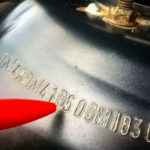Когда требуются широкие деревянные доски или напели, обычно приходится соединять по длинной кромке, или сплачивать, более узкие элементы, чтобы получить нужную ширину. The boards differ in size depending on the type of wood from which they are made. Very rarely from one piece is made, for example, a countertop even from such a thick tree as a Mahagon.
Such a problem, of course, does not exist when using artificial wood mat. such as plywood, fiberboard or chipboard, since they have large sizes, for example 1S25XI52S mm or 1230 × 2440 mm. and by nature are not subject to warfare or other deformations.
If you look at the end fiber of any boards from an array, you can replace one -year rings (in some breeds they are more pronounced). The empirical rule suggests that they try to straighten when the wood dries. This will tell you which way the board will be tagged. If the annual rings are long, then this is the “Tangential Snovka” board and, apparently, will be more to bore than a board with short annual rings (which is called the “radial cutting” board).
There are various methods of rallying boards. The simplest of them consists in combining them “on the smooth edge” (also this method is called on a smooth fugu) using glue and clamping with clamps for the time of its drying (see. Gluing). For a more durable and durable connection, you can use, dowels, lamellas or a long insert “plywood rail, which is inserted into the pallets on the edges of both boards. In addition, using a special milling cutter, you can make a slap puzzle “PAZ-Grain” or in a quarter. These methods not only mechanically harden the connection, but also increase! The area of the gluing.
SCROLL
Steel ruler and square
Straight mill 6 mm
Birch plywood 6 mm 2-4-river clamps
PVA glue or synthetic glue
Water container and rag
Manual rubbish
Strict-raising machine Lamella cutter or manual electric drill, cams and dumplings or milling stakes






